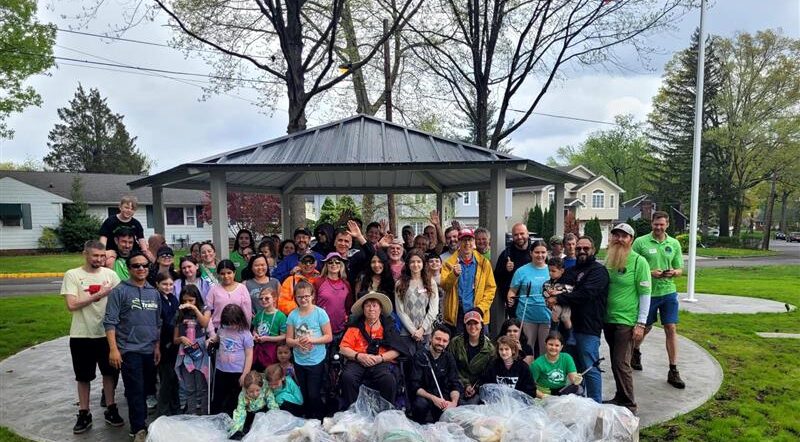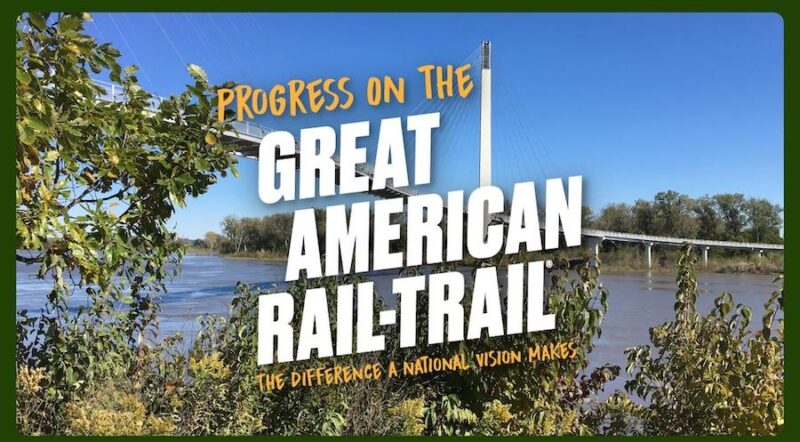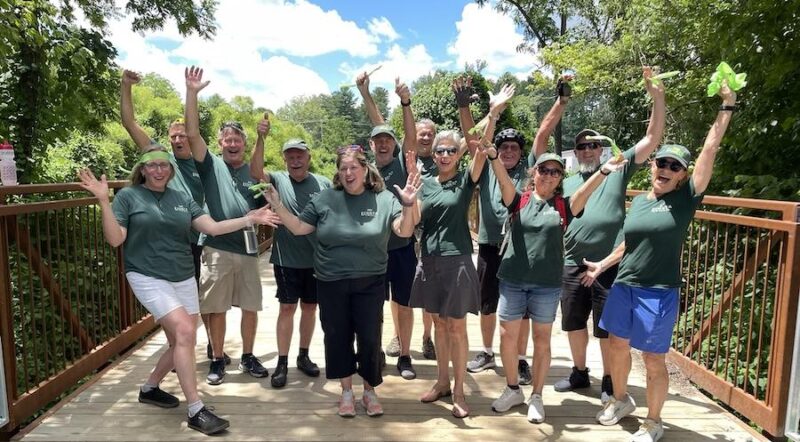California Invests Big in Trails, Demonstrates Growing Statewide Demand for Walking and Biking Infrastructure
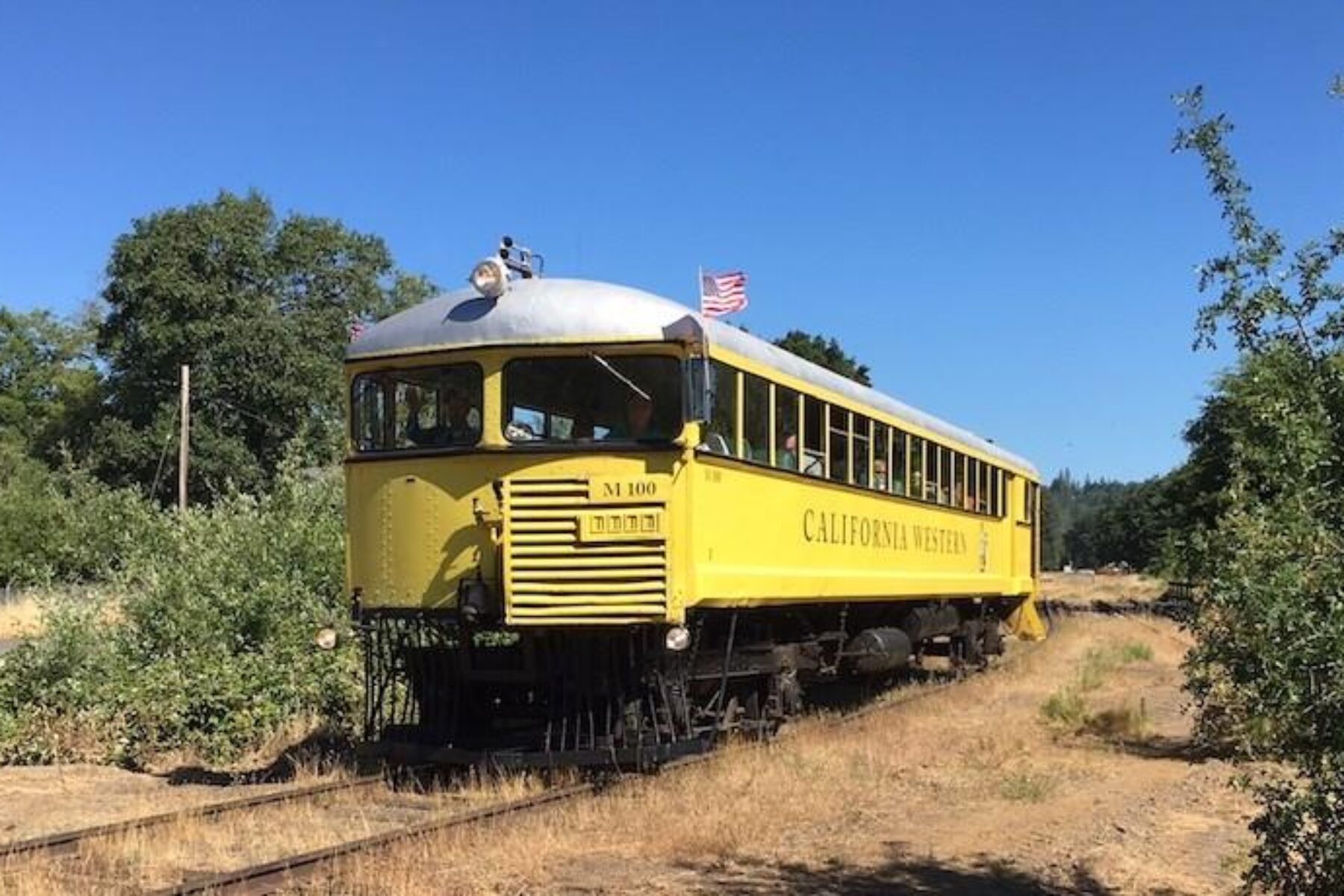
The California Transportation Commission (CTC) recently approved more than $280 million in Active Transportation Program (ATP) funding (Cycle 4) to support 59 trail, walking and biking projects throughout the state, with about half—some $139 million—going to trails and separated bikeway projects (hereafter collectively referred to as “trails”).
This huge investment in trails comes on the tails of a $1 billion increase in ATP funds – a $100 million annual increase over the next decade – announced last year with the approval of Senate Bill 1 (SB 1).
Here’s a quick analysis of how this historic funding stream is impacting trail projects statewide.
Most Competitive ATP Cycle Ever Shows Growing Trail Demand
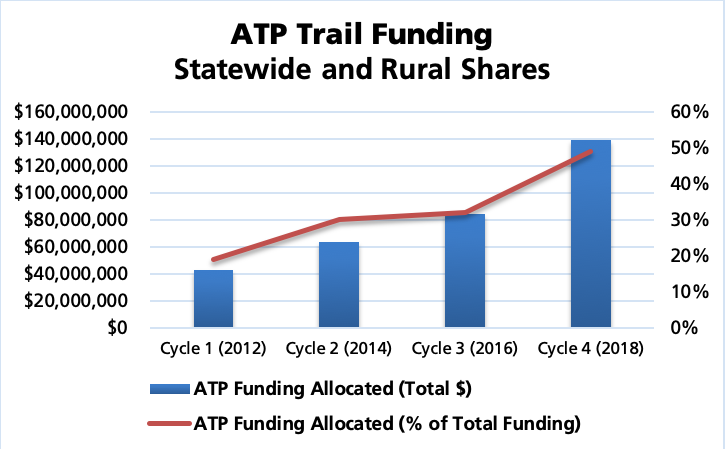
Despite the increase in funding from SB 1, this year’s program—which began with an application process in 2018—was more competitive than ever, with less than 11 percent of 554 applications making the cut. The good news is that more funding went to trails than ever before: In the last three ATP cycles, an average of $64 million was allocated to trail projects from the statewide and rural shares; this year, the number more than doubled.
Another notable trend can be seen in the increase in both individual project size and ATP funds requested, which jumped to an average of more than $4 million per project (double the average from the previous ATP cycle). This was likely in response to the CTC encouraging larger projects with the potential for more transformative impact on communities.
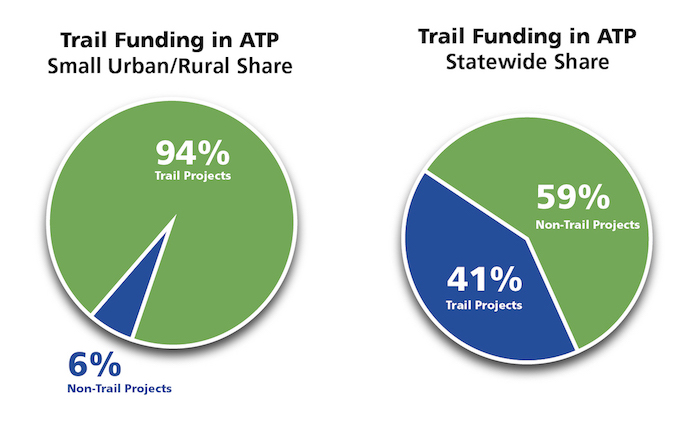
The ATP sets aside 10 percent of each cycle of funding for small urban and rural projects, and trails dominated this portion of the program, receiving $41 million, or 94 percent, of this part of the pot. This reflects the growing need and demand for safe, separated pathways in rural and small urban areas.
Notable Trail Projects in Cycle 4
During Cycle 4, Rails-to-Trails Conservancy’s (RTC’s) Western Regional Office provided technical assistance to a number of disadvantaged communities across the state, helping them to develop competitive ATP applications. Part of this work was as a consultant to Caltrans and the California Strategic Growth Council. RTC also led the Active Transportation Resource Team (ATRT), which includes the Local Government Commission, California Walks and the California Bicycle Coalition, in assisting low-income communities in the Central Valley and Inland Empire to translate active transportation goals/policies into on-the-ground improvements ready for implementation.
The final list of newly funded trail projects span the state—from the north coast to San Diego, rural to urban. Here are just a few notable examples.
University of California, Santa Cruz Bike Path Safety Improvement Project
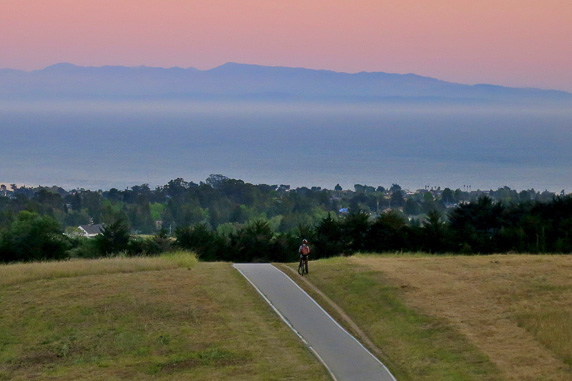
The Great Meadow Bike Path at the University of California, Santa Cruz (UCSC) features breathtaking views of Monterey Bay while providing students, faculty and staff with a safe way to commute to and from campus. While this Class I bike path is complete, it is starting to show its age of 43 years and is in need of critical safety improvements.
Between 2006 and 2015, there were a total of 50 accidents on the trail—including eight that required airlifts to local hospitals. The UCSC Bike Path Safety Improvement Project calls for some proposed changes intended to bring the trail up to current Caltrans safety standards, including a widening and repaving of the bike path. These changes will not only benefit the students and employee of UCSC but will create safe routes to school for students and employees of other nearby educational institutions.
Juan Bautista de Anza Multi-Use Trail (City of Moreno Valley)
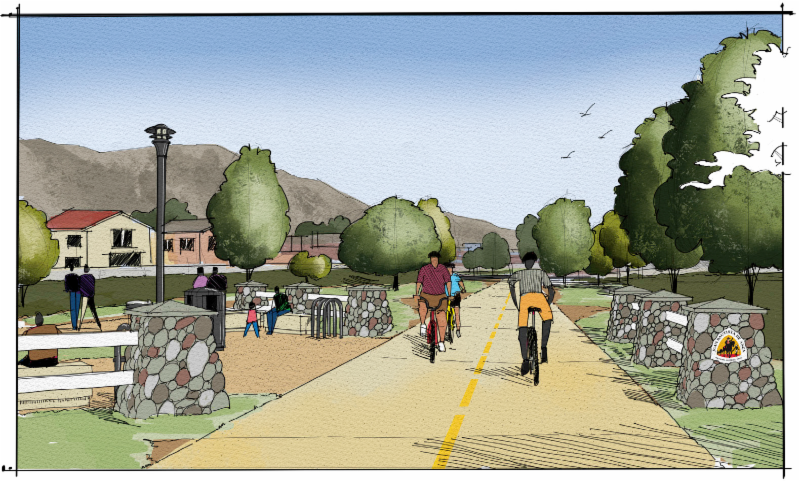
The Juan Bautista de Anza Trail is an international historic route that spans more than 1,200 miles, connecting Sonora, Mexico, to Nogales, Arizona, and then heading north through California to San Francisco. The trail follows the path that Juan Bautista and over 200 others took to establish the first non-native settlement in the San Francisco Bay Area.
The City of Moreno Valley plans to construct an 8-mile section of the trail that will connect many of the city’s disadvantaged communities to a larger trail network. The completed project is anticipated to enable many residents to commute more safely and more sustainably. Many neighborhoods along the trail are among the most health-disadvantaged communities in the state, and trail proponents hope the completed project will improve the overall health of these communities.
City of Willits Rail-with-Trail
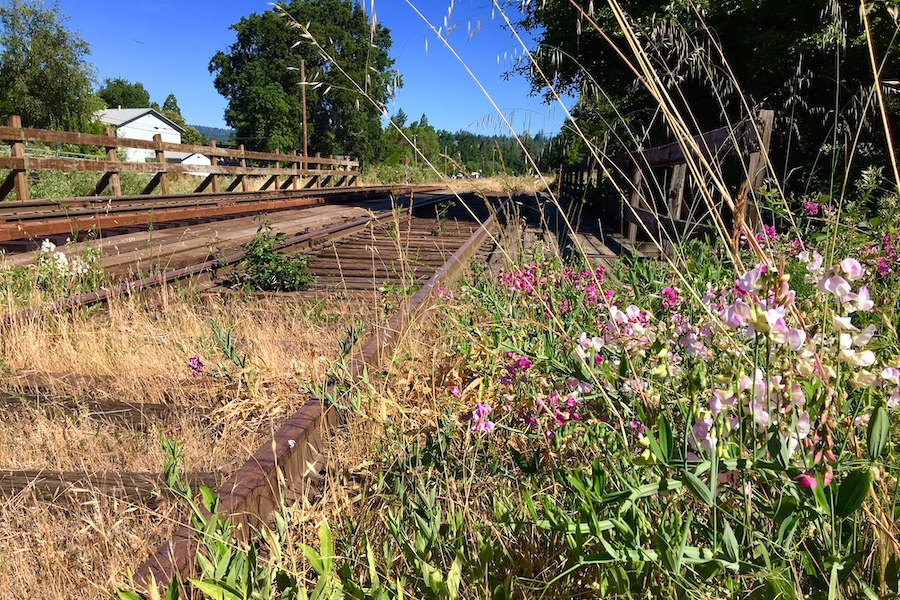
The city of Willits Rail-with-Trail will run from southern Willits to the City’s downtown, totaling 1.6 miles and connecting multiple important destinations—including schools, a senior center, a new hospital and a future California Conservation Corp campus. There is currently no nearby bicycle infrastructure, forcing riders to ride on Main Street (formerly Highway 101) in high-speed traffic, or on the sidewalk, which can be unsafe for both pedestrians and bicyclists. The city and local advocates hope this multiuse rail-with-trail parallel to Main Street will increase bicycle and walking trips, and result in health benefits for the community. RTC, along with the Local Government Commission, helped the City of Willits prepare their successful ATP grant application for this project.
Related: California Ups the Ante With Billion-Dollar Active Transportation Plan
Moving Forward in California
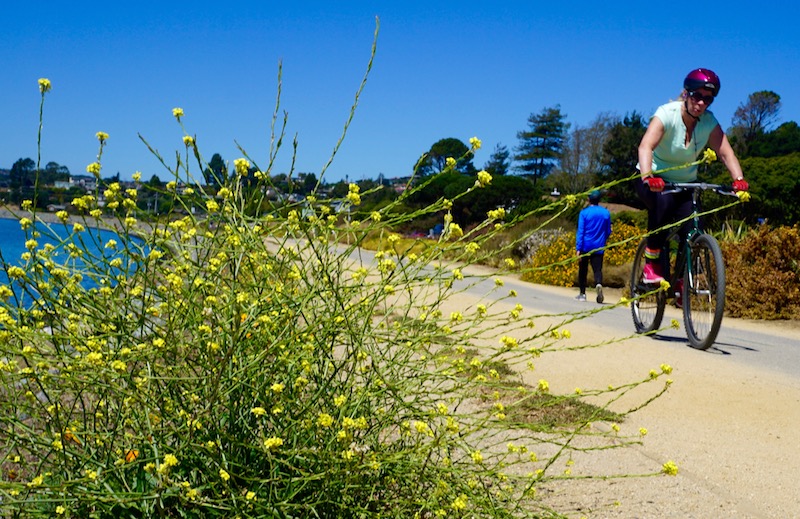
The $281 million just programmed by CTC makes up only 60 percent of total ATP Cycle 4 funding. The remaining 40 percent will be allocated by regional metropolitan planning organizations (MPOs) throughout the state over the next few months.
Historically, trail projects have performed even better in the MPO share; for example, in Cycle 1, trails garnered nearly 38 percent of MPO funds—about twice the proportion from the statewide share. It is clear trails are becoming an increasingly important part of the state’s active transportation network.
The intense competition for ATP funds, even after a $100 million increase in program funding annually (over 10 years) thanks to SB 1, reflects the huge demand across the state for connecting communities through safe, comfortable and protected bicycle and walking facilities that can be enjoyed by all.
Stay tuned for updates this fall on the MPO cycle.
Special acknowledgment to RTC intern Malcolm Duncan-Graves for contributing to this article.

Donate
Everyone deserves access to safe ways to walk, bike, and be active outdoors.
